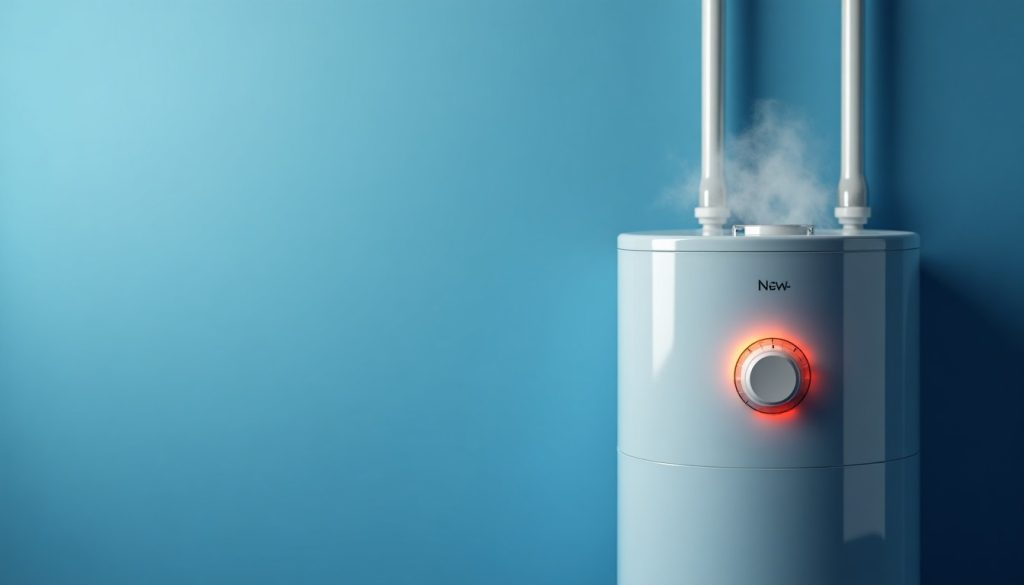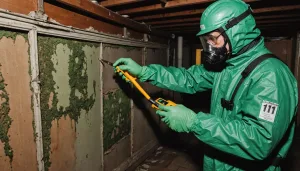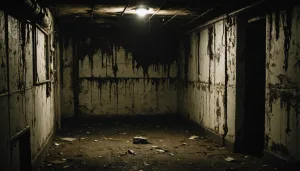Understanding your water heater system is crucial for ensuring it runs efficiently and has a long lifespan. Water heaters are essential components of modern homes, providing the necessary hot water for daily tasks such as showering, cooking, and cleaning. Familiarizing yourself with the basic types and functionalities of water heaters not only helps in efficient maintenance but also aids in troubleshooting when issues arise.
Most residential water heaters can be categorized into two primary types: tank-style and tankless. Each type has distinct features and advantages, and understanding these differences can be beneficial for homeowners.
| Type | Features | Advantages |
| Tank-style | Stores a large volume of water in an insulated tank | Provides a constant supply of hot water; typically less expensive upfront |
| Tankless | Heats water on demand without storing it | Energy efficient; takes up less space; provides endless hot water |
A tank-style water heater typically consists of a thermostat, heating elements, and an anode rod to prevent corrosion. The thermostat regulates the temperature, while the heating elements heat the water to the desired level. This type of system requires regular checks, especially of the anode rod, to prevent rust and extend the unit’s longevity.
On the other hand, a tankless water heater, also known as an on-demand water heater, heats the water only as needed. It uses a high-efficiency heat exchanger to raise water temperature as it passes through the unit. While generally requiring less maintenance, tankless systems benefit from periodic flushing to remove mineral deposits and ensure optimal performance.
For effective water heater maintenance, it’s essential to consider the overall plumbing system in which the unit operates. Inspecting connections for leaks, ensuring proper water pressure, and confirming that the heating device’s settings are correctly configured are all vital homeowner tips. Incorporating these practices can significantly reduce the chances of unexpected breakdowns and costly repairs.
Being knowledgeable about your water heater system allows you to make informed decisions about its operation and maintenance. Whether it’s understanding the specifics of the components or the interplay with your home’s plumbing, this knowledge forms the foundation for successful maintenance and troubleshooting strategies.
Safety precautions before maintenance
Before embarking on any maintenance tasks for your water heater, it’s crucial to take a series of safety precautions. Ensuring your safety not only protects you from potential hazards but also helps maintain the integrity of your water heater system. Here’s a step-by-step guide to prepare safely for water heater maintenance:
1. Turn Off the Power Supply:
– Electric Water Heater: Locate the circuit breaker in your home’s electrical panel that controls the power supply to the water heater. Flip the switch to the ‘off’ position to cut off electricity to the unit.
– Gas Water Heater: Set the thermostat to the lowest setting and carefully turn the gas control knob to the ‘off’ position. This will stop the flow of gas to your heater.
2. Shut Off the Water Supply:
– Find the cold water shut-off valve, typically located at the top of the water heater. Turn this valve clockwise to stop the flow of water into the tank. This prevents any new water from entering while you perform maintenance.
3. Test for Electric Current (Electric Models Only):
– With a voltage detector or multimeter, check to ensure that there is no electrical current flowing to the water heater. Always verify that the unit is completely de-energized before commencing any work.
4. Allow the Water to Cool:
– Wait for the water inside the tank to cool down. Hot water can cause burns, so it is essential to wait several hours after turning off the heater or use a hot water faucet to release and reduce the temperature.
5. Relieve Pressure:
– Carefully lift the pressure relief valve to release any excess pressure in the tank. This step is crucial to avoid pressure-related accidents during maintenance tasks.
6. Prepare for Water Discharge:
– Connect a garden hose to the drain valve, usually located at the bottom of the tank. Make sure the other end of the hose is placed in a secure drainage area to handle the outgoing water.
7. Inspect the Work Area:
– Ensure that the area around the water heater is free from combustible materials and clutter. If needed, clear away items to create a spacious and safe workspace.
By following these steps, homeowners can safely prepare their water heaters for any necessary maintenance tasks. Taking these safety precautions is an essential part of the process, providing both peace of mind and practical protection. Remember, safety should always be your top priority before diving into maintaining your home’s plumbing system.
Regular maintenance tasks
Engaging in routine maintenance for your water heater ensures it operates efficiently and prolongs its lifespan, saving you from unexpected breakdowns and expensive repairs. Regular maintenance is essential for both tank-style and tankless water heaters, as each has specific needs to guarantee optimal performance.
For those with a tank-style water heater, an essential maintenance task is checking and potentially replacing the anode rod. The anode rod is a crucial component designed to attract corrosive elements in the water, thereby preventing rust from forming on the tank itself. Experts recommend inspecting the anode rod every year and replacing it if more than 50% of it has corroded. This simple check can significantly extend the life of your heater.
Another critical task is to drain and flush the tank periodically. Over time, minerals and sediment can accumulate at the bottom of the tank, particularly if you have hard water. This sediment buildup can reduce heating efficiency and even damage the tank. By draining the water heater and flushing it with clean water, you remove these deposits, ensuring that your heater runs smoothly and efficiently.
For tankless water heaters, routine descaling is necessary to maintain efficiency. Mineral buildup, especially in areas with hard water, can obstruct the flow of water and reduce heating efficiency. Flushing the system with a vinegar solution at least once a year can help dissolve mineral deposits and maintain optimal water flow. This process is often referred to as “descaling” and plays a vital role in avoiding damage to your water heater’s internal components.
Performing these regular maintenance tasks also provides a good opportunity to inspect the valves and temperature settings in your system. Ensure that the temperature is set to the recommended 120 degrees Fahrenheit to prevent scalding while maximizing energy savings. It’s also advantageous to test the pressure relief valve, which prevents excess pressure buildup, reducing the risk of damage to the tank.
Incorporating homeowner tips into your routine maintenance can avert major plumbing headaches. Regularly checking connections for leaks and ensuring that all components are in good working order helps in identifying potential issues before they become significant problems. Implementing these regular maintenance practices not only guarantees a consistent supply of hot water but also enhances the longevity and efficiency of the water heater, fostering a reliable hot water system in your home.
Troubleshooting common issues
Occasionally, even with consistent upkeep, water heaters can present issues that disrupt your daily routine. Knowing how to troubleshoot these common problems can save you time and money, while ensuring your heater functions effectively.
One of the most frequent issues homeowners face is a lack of hot water. This could stem from a few potential causes depending on whether you have a gas or electric heater. For electric models, start by checking the circuit breaker to ensure it’s not tripped. If the breaker has indeed tripped, reset it and see if this resolves the issue. In some cases, the upper thermostat of the water heater might not be functioning properly, requiring a replacement, which is a task you might consider leaving to a qualified professional.
In the case of gas water heaters, check that the pilot light is lit. If it’s out, it could be due to a faulty thermocouple, which might need cleaning or replacing. A dirty pilot tube could also be the culprit, obstructing gas flow. Regularly cleaning the pilot tube as part of your maintenance routine can help prevent this issue.
Another common concern is the water heater leaking, which can often be traced back to a few areas. Begin by inspecting the temperature and pressure relief valve for leaks, as these safety devices are crucial for maintaining pressure within safe limits. A simple adjustment or replacement might be necessary if the valve is not functioning properly. Additionally, check for leaks around the plumbing connections and drain valve at the tank’s bottom. Tightening loose connections or replacing a faulty drain valve can sometimes resolve this issue efficiently.
Sediment buildup, especially in homes with hard water, can cause unusual noises from the tank, such as popping or rumbling sounds. This signals that minerals have accumulated at the tank’s bottom, restricting water flow and heating efficiency. Performing a complete tank flush can alleviate these noises and enhance your water heater’s efficiency.
If your water heater is producing water that is too hot or not hot enough, you might need to adjust the thermostat settings. Ensure the temperature is set to the recommended 120°F to prevent scalding and enhance energy savings. If you notice a sudden and drastic change in water temperature, it might indicate a faulty thermostat or heating element needing inspection or replacement.
Remember, while many water heater issues can be resolved with basic troubleshooting, certain problems may require professional help. Complex issues such as extensive leaks, frequent tripping of breakers, or repeated pilot light failures might indicate a deeper, underlying problem. Familiarizing yourself with these troubleshooting tips and being vigilant with your water heater system can prevent minor hiccups from turning into major headaches.
When to call a professional
Water heaters are generally reliable, but there are certain situations where homeowners should reach out to a professional to address more intricate issues. One such scenario is when there are persistent leaks that you can’t resolve with basic troubleshooting. A leaking tank can indicate a serious problem, such as a corroded tank or faulty plumbing, which may require specialized equipment and expertise to fix safely and effectively.
Another situation that warrants calling a professional is when the water heater repeatedly trips the circuit breaker. This can be indicative of an electrical issue, such as a short circuit or a failing heating element, which poses a risk of fire or electric shock. Professionals have the skills to diagnose and resolve electrical issues safely.
If you encounter strange noises that persist after flushing the tank, this might suggest severe sediment buildup or even damage to internal components. A professional can inspect the system comprehensively and perform more advanced cleaning or repairs as needed.
Additionally, if you notice a sudden change in water temperature, such as water being extremely hot, it may indicate a malfunctioning thermostat or gas valve, depending on whether your heater is electric or gas-powered. These components ensure safe operation by maintaining consistent water temperatures, and any fault requires precise adjustments that professionals are equipped to handle.
If there’s a pilot light on your gas heater that keeps going out, despite regular cleaning and maintenance, this might point to a problem with the thermocouple or gas line. Such issues require professional attention to prevent potential gas leaks or inefficiencies.
While regular maintenance and homeowner tips can help prevent many issues, it’s important to recognize when a professional evaluation is necessary. Such interventions help protect the integrity of your water heater, ensure the safe operation of your home’s plumbing system, and ultimately provide peace of mind by resolving complex issues that are beyond your expertise.
In maintaining a water heater, proactive care and timely professional intervention are key to enjoying a consistent supply of hot water and an efficient system. Keeping an eye on your water heater’s performance and understanding when to call in the experts can enhance its longevity and reliability, ultimately contributing to a well-functioning home.





